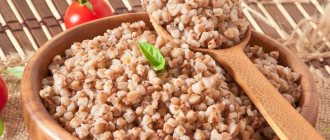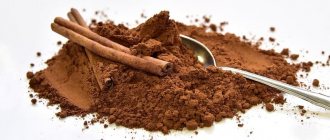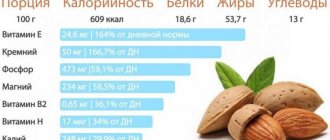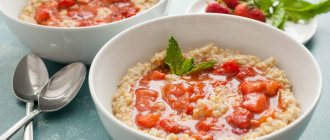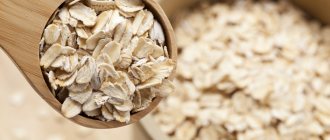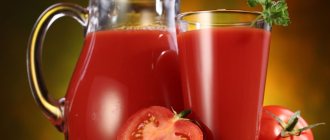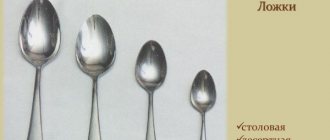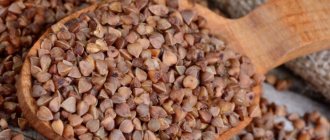How to properly cook rice for a side dish
Wash the rice grains well before cooking. It is recommended to use cold running water. Since rice contains a large amount of starch, a kind of sticky substance is released. The viscosity is washed out with ordinary water. Pour the grains into a deep saucepan, add some water and drain. Washing can be done several times.
This recommendation is suitable for preparing a side dish. Other rice dishes (such as risotto) require the use of glutinous rice.
Fill a metal pan with purified water. It is advisable to use dishes with a thick bottom. It is recommended to monitor the water level - the liquid level should be twice the amount of cereal. Add a little table salt (half a teaspoon per glass of grains is enough).
When the water boils, add a glass of rice. There is no need to mix the grains. Just cover the dish with a lid and time it for exactly ten minutes. Cook the rice side dish over medium heat. After the specified time has elapsed, reduce the heat and cook for approximately seven minutes.
The surface of the rice porridge will be covered with small depressions. Remove the pan from the heat and wrap it well with a towel to keep warm. Wait about ten minutes. Excess liquid will evaporate from the porridge. Now all that remains is to serve the dish on the table.
You will get delicious, fluffy rice without much difficulty. The considered method of preparing a side dish goes perfectly with vegetable gravy, meat or mushrooms. You can use ready-made rice porridge to create cabbage rolls. Or serve as an independent dish.
How many grams of rice in a glass
| Name of the glass | Rice weight in grams |
| Full faceted 200 ml. glass of rice (filled to the brim) | holds 225 grams of rice |
| Faceted 200 ml. a glass of rice (filled to the brim) | holds 180 grams of rice |
| Full 250 ml. glass of rice (filled to the brim) | holds 280 grams of rice |
| In the usual 250 ml. a glass of rice (filled to the brim) | holds 225 grams of rice |
A glass of rice 200 ml contains 220 g of cereal. (filled to the brim)
200 ml glass – contains 180 g of rice. (filled to risk)
A glass of rice 250 ml contains 280 g of cereal. (filled to the brim)
It is necessary to take into account the extent of its fullness. If a 200 milliliter container is filled to the brim, it holds 220 grams of rice, but if the cereal is poured only along the line, its weight is no more than 180 grams. If a 250 milliliter container is filled to the brim, it holds 280 grams of rice, but if the cereal is poured only along the line, its weight is no more than 220 grams.
Questions often arise about how much rice fits in a glass that is not completely filled. We will calculate frequently used proportions for you; we will do this calculation for both types of glasses (200 ml / 250 ml). See table below.
| Glass fullness | Glass 250 ml. | Glass 200 ml. |
| 1/2 cup rice | 140 grams | 112 grams |
| 1/3 cup rice | 93 grams | 75 grams |
| 2/3 cup rice | 187 grams | 150 grams |
| 1/4 cup rice | 70 grams | 56 grams |
| 3/4 cup rice | 210 grams | 169 grams |
| 1/5 cup rice | 56 grams | 45 grams |
| 2/5 cup rice | 112 grams | 90 grams |
| 3/5 cup rice | 168 grams | 135 grams |
| 4/5 cup rice | 224 grams | 180 grams |
Of course, if you need to measure a small amount of rice, it is best to use a tablespoon and a teaspoon. With their help you can measure small volumes with great accuracy. Read our article how many grams of rice are in a spoon (tablespoon and teaspoon).
How many grams are in a milliliter of rice?
Mass is a characteristic of a body, which is a measure of gravitational interaction with other bodies.
Volume is a quantitative characteristic of the space occupied by a body, structure or substance.
Density is a physical quantity defined as the ratio of body mass to body volume.
The relationship between milliliters and grams of rice is determined by a simple mathematical formula:
Do you always follow the correct storage of food/medicines and their product proximity?
Yes, of course, this is very important so as not to spend money on your health later.
43.93%
Not really, because there won’t be anything like going to the toilet.
24.64%
I look at it by appearance and if I use anything after heat treatment.
31.43%
Voted: 280
V—volume; m—mass; p—density.
In the calculation, the density of rice = 750 kg/m3 was taken.
The density of rice can vary depending on temperature and pressure. You can find the exact density of rice in reference books.
See also the universal program for converting milliliters to grams for any substance depending on its density.
If you need to convert m3 to tons, then see the program for converting tons to m3.
If you need to convert kg to m3, then see the program for converting kg to m3.
If you need to convert liters to kg, then see the program for converting liters to kg.
Question: How many grams are in a milliliter of rice?
Answer: 1 g of rice is equal to 1.333 milliliters.
Question: How many milliliters are in a gram of rice?
Answer: 1 milliliter (ml) of rice is equal to 0.75 grams (g).
You can quickly solve this simple mathematical operation using our online program. To do this, enter the initial value in the appropriate field and click the button.
This page provides the simplest program for converting grams of rice to milliliters. With this online calculator you can convert milliliters of rice to grams (ml to g) and vice versa in one click.
Density is a physical quantity defined as the ratio of body mass to body volume.
How much rice for 1, 2, 3, 4, 5, 6 servings?
When preparing a dish, two questions often arise: what to use as a base (meat, fish, vegetables) and what side dish will go with it. Rice is an excellent side dish for any base, as it goes well with almost all types of meat, fish and vegetables.
In addition, this is a fairly healthy cereal for humans, since it is good, proper carbohydrates that take a long time to digest and provide energy for a long time, plus they are necessary proteins. And at the same time, it is easy and quick to prepare, which is also very convenient.
Often people tend to cook food in portions so that they can eat everything they have prepared and not leave it for other days when the dish changes its taste. This raises the question of how much to put in to get the required portion (Additionally read: How much water for 100, 300, 500, 900 grams of rice).
It is optimal to put two heaped tablespoons of rice per person, then you can perform some simple calculations to get answers to the question asked:
- for 2 servings - four tablespoons of rice (read more on the topic: “What to cook from rice quickly and tasty”);
- for 3 servings - six tablespoons of rice;
- for 4 servings - eight tablespoons of rice;
- for 5 servings - ten tablespoons of rice;
- for 6 servings - twelve tbsp.
Read more on the topic: How much salt for 1, 2, 3 cups of rice and 50, 80, 100, 150, 200 grams of raw rice - this is how much boiled.
How many grams are in a tablespoon of boiled rice?
One tablespoon contains 30 grams of boiled rice with a heap (the heap is not very large, since boiled rice sticks together and you can put a very large portion into a spoon).
1 tablespoon contains 15 grams of boiled rice without a slide.
How many grams of dry rice are in a teaspoon?
One teaspoon contains 8 grams of dry rice with a slide.
1 teaspoon contains 5 grams of dry rice without a slide.
How many calories are in 1 tablespoon of boiled rice?
The calorie content of 1 heaped tablespoon of boiled rice is approximately 35 calories.
One level tablespoon of boiled rice contains 17 calories.
Answers to popular questions on the topic, how to measure rice in grams without scales using a tablespoon?
Let's consider below the most popular calculations of the required number of spoons of rice in order to measure the required mass of rice, both dry and boiled:
Measure cooked rice with a tablespoon
- 300 grams of boiled rice is how many tablespoons? 300 g of boiled rice = 10 heaped tablespoons of boiled rice (not very large).
- 200 grams of boiled rice is how many tablespoons? 200 g of boiled rice = 6 heaped tablespoons of boiled rice + 1 heaped tablespoon.
- How many tablespoons are 100 grams of boiled rice? 100 g of boiled rice = 3 heaped tablespoons of boiled rice + 1 level tablespoon.
- How many tablespoons are 50 grams of boiled rice? 50 g of boiled rice = 1 heaped tablespoon of boiled rice + small mounded tablespoon.
Measure dry rice using a tablespoon
- How many tablespoons are 500 grams of rice? 500 g rice = approximately 21 heaping tablespoons of rice.
- How many tablespoons is 400 grams of rice? 400 g of rice = 16 heaped tablespoons of rice + 1 level tablespoon.
- 300 grams of rice is how many tablespoons? 300 g of rice = 12 heaped tablespoons of dry rice + 1 level tablespoon.
- How many tablespoons is 260 grams of rice? 260g rice = approximately 11 heaping tablespoons of rice.
- How many tablespoons is 250 grams of rice? 250 g of rice = 10 heaped tablespoons of rice.
- How many tablespoons is 200 grams of rice? 200 g of rice = 8 heaped tablespoons of rice + 1 heaped teaspoon of rice.
- How many tablespoons is 150 grams of rice? 150 g of rice = 6 heaped tablespoons of rice + 1 heaped teaspoon of rice.
- How many tablespoons is 120 grams of rice? 120 g of rice = 5 level tablespoons of dry rice.
- 80 grams of rice is how many tablespoons? 80 g of rice = 3 heaped tablespoons of rice + 1 heaped teaspoon.
- 75 grams of rice is how many tablespoons? 75 g of rice = 3 heaped tablespoons of rice.
- How many tablespoons is 70 grams of rice? 70 g of rice = 3 level tablespoons of rice + 2 level tablespoons of dry rice.
- How many tablespoons is 60 grams of rice? 60 g of rice = 2 heaped tablespoons of rice + 1 heaped tablespoon of rice.
- How many tablespoons is 50 grams of rice? 50 g rice = approximately 2 heaped tablespoons of rice.
- 40 grams of rice is how many tablespoons? 40 g rice = 1 heaped tablespoon of rice + 2 heaped teaspoons of dry rice
You will also be interested in learning how to measure a large amount of rice using a faceted glass (read in the article: how many grams of rice are in a glass), as well as:
In conclusion to the article, it can be noted that knowing how to weigh rice without scales using a tablespoon or teaspoon, you can easily measure the required mass of raw or cooked rice when preparing various dishes (salads, soups, porridges). We leave our advice and feedback on the topic of how much rice is in a tablespoon of rice (dry, boiled) in the comments to the article and share it on social networks if it was useful to you.
Rice is used in almost every home when preparing various dishes and as a side dish, so it will be useful for many to learn how to weigh rice without scales in grams at home, as well as how much rice (dry and boiled) fits in one tablespoon or teaspoon.
https://www.center-pss.ru/math/millilitrivgramm/ris.htmhttps://portalonline.ru/kulinariya/2163-50-80-100-150-200-gramm-syrogo-risa-eto-skolko- varenogo.htmlhttps://fit-and-eat.ru/produkty/kalorijnost-risa.htmlhttps://infoeda.com/skolko-v-stolovoj-lozhke-gramm-risa-suxogo-otvarnogo.html
Cooking delicious fluffy rice: butter method
Step 1. Sauté onions (optional) and rice (no frying, rather heating and mixing with a little oil).
Helpful advice! High-quality rice does not need to be washed, since it is already thoroughly cleaned, and washing will remove some nutrients from it (while others are doomed to disappear under the influence of heat).
Stir the rice grains in the pan until they are completely coated with oil. This will help keep the rice from sticking together and make the rice fluffy.
Step 2. Add boiling water (broth) to the rice.
The next step in making fluffy rice is to add boiling water to the pan (to save time, I always pour it from a boiling kettle). Perhaps you prefer broth - chicken, beef and fish are great options for rice. Whether you use bouillon cubes is up to you, but for my taste they are a little too strong for the delicate flavor of the rice. Also don't forget to add salt, about 1 teaspoon for every 150 ml of rice.
You can add any broth, but chicken broth is best suited for these purposes; it will give the rice an aromatic and at the same time mild taste.
Important. Once the hot liquid is added, stir it into the rice only once so as not to disturb the grain structure. If you stir nervously and vigorously, know that this is a fatal mistake that will inevitably lead to the inevitable: instead of fluffy rice, you will get sticky starch.
Step 3. Close the lid, set the heat to low, and leave the rice alone.
At this stage, you need to cover the rice with a lid and turn the heat to low. If you want your rice to be tasty and fluffy, leave it alone, just step away from the stove. Housewives who like to look under the lid and think that rice should definitely be “controlled”, alas, are mistaken. They will simply release steam from under the lid and the cooking process will slow down. Meanwhile, cook rice (tasty) as quickly as possible: for white varieties, 15-25 minutes are enough (depending on the type of rice, see the label), for brown 40. If you are forgetful, set a timer - rice does not tolerate even the slightest burning.
How to check the doneness of rice? The best way is to simply bite into the grain. Another method is to tilt the pan and, if liquid collects on the edge, cook for a couple of minutes more.
Step 4. No fire, postscript.
Once the rice is cooked, remove the lid, turn off the heat and cover the rice with a clean tea towel for 5-10 minutes. The fabric will absorb steam and help keep the grain dry and separate. Just before serving, lightly fluff the rice with a fork. If you didn't overcook the rice in the pan in step 1 (you shouldn't), it will turn out almost snow-white. If you want to get a beautiful golden color, saute longer. The color of rice also depends on the color of the oil (colorless vegetable, butter).
Other articles about rice:
- “Medicinal” rice
- Useful properties and composition of rice
- Rice diet for weight loss and cleansing
How to wash rice
If you wash rice before placing it in a pot or rice cooker, you need to use a significant amount of water. In any case, begin rinsing by mixing the cereal with your fingers in a circular motion. You can also gently rub it between your palms to remove excess starch. This component can influence how many times the rice expands when cooked.
Don't expect one wash to make the grain clean. As a rule, the first water becomes dirty and cloudy. Your goal is to repeatedly rinse the rice with clean water until it runs almost clear. If you are measuring the exact ratio of water to rice, drain it into a sieve before adding it to the pan.
How to choose the right rice
Photo source: https://orebenke.info
The health benefits and taste characteristics of rice dishes directly depend on the quality of the raw materials. The fresher the rice grain, the more beneficial it is for the body, and the more conscientious the manufacturer, the more stages of purification from impurities the product has gone through. A few simple tips will help you avoid mistakes when choosing cereals:
- Attention to packaging
First of all, the packaging must be inspected for integrity: check for signs of opening, re-sticking of the label or resoldering of the packaging seams.
Any packaging must contain information about the manufacturer and date of manufacture.
If the cereal was packaged from a large container, then the consumer packaging must contain data on the date of packaging. It’s a good sign if GOST is on the packaging.
Any packaging must be clean, not torn, without traces of dust and dirt. A careless attitude towards the container can lead to the fact that when opened, all microbes will immediately end up in the product itself and on your kitchen table.
Be sure to shake the bag a couple of times in different planes and inspect it for impurities: grains that differ in color and size, larvae, sand, insects, dry grass, and so on. The presence of impurities of plant origin indicates the dishonesty and low culture of the manufacturer.
If you find traces of the presence of insects, larvae, etc., you should immediately refuse to purchase this product, as it may be hazardous to health. You can report such a product to the store manager or salesperson so that they can immediately remove it from the shelf.
- My years are my wealth
This phrase applies only to basmati, which, when properly stored, only becomes more aromatic and tastier, but it cannot be stored for longer than 18 months. All other varieties of rice lose their consumer properties during storage and become less healthy. Other types of cereals can be stored for 16 to 18 months, so you should carefully pay attention to the production date indicated on the product. Otherwise, it may turn out that a product purchased for future use will turn out to be unsuitable for consumption in a month.
When purchasing rice cereal, you should give preference to trusted manufacturers whose products you have already tried and were satisfied with. If you decide to purchase a new brand, do not rush and treat the whole family to this rice; it is better to first prepare a small portion for testing.
How to cook rice in a slow cooker
Place the rice in the multicooker bowl. Add water and the spices you need. Close the lid and set the mode to “Cereals”, “Rice”, “Pilaf” or “Buckwheat”. The approximate cooking time for rice is:
- for white - 30 minutes;
- for steamed - 30–40 minutes;
- for brown - 50 minutes;
- for wild - 50–60 minutes.
Footage: AmyLearnsToCook / YouTube
How many calories are in a spoon of rice (we count the number of calories in spoons)
In order to measure (measure) the required amount of calories, you can use spoons. This is a very reliable and fast method. To do this, you need to know how many calories are in one spoon. Then, using mathematical calculations, we calculate the required number of calories.
| Type of spoon | Calorie content of boiled rice |
| Calorie content of rice in one heaped tablespoon | 35 calories |
| Calorie content of rice in one level tablespoon | 17 calories |
| Calorie content of rice in one heaped teaspoon | 10 calories |
| Calorie content of rice in one level teaspoon | 7 calories |
Cooking process of real fluffy rice
To make rice very crumbly, you need to choose long-shaped grains.
- Pre-soaking will help make the rice fluffy. Long varieties of rice can simply be poured with boiling water and cooled in cold liquid. Round rice is usually soaked for twenty-five minutes.
- The second secret to making fluffy rice involves pre-frying. Place the grains on a hot frying pan. Stir for a few minutes.
- In addition, many cooks use ordinary vegetable oil to prepare delicious fluffy rice. A spoonful of butter per glass of grains is enough.
Ingredients for pilaf for 10 people
Variant of pilaf for 10 people with devzira rice:
- 1 kg of meat (pork, beef, lamb);
- 1 kg devzira;
- 1 kg carrots (already peeled);
- 300-500 g of onion or to taste - this component will not spoil the dish;
- 300 ml vegetable oil;
- head of garlic;
- 100 g chickpeas;
- 100 g raisins;
- 1 tbsp. l. cumin;
- pomegranate seeds for decoration.
From this number of components you will get exactly 3800-4200 g of pilaf, depending on the chosen rice and meat. This amount is enough to feed 10 men at one time.
Cooking time for different types of rice
There are countless varieties of rice in the world. We have selected the most popular and accessible to people living in our latitudes, and have designated cooking times for each. This may be useful to anyone who decides to cook soup with rice and does not know how many minutes before the end of cooking the soup to add cereal.
See also: Soups - good or bad?
Table 2. How long to cook rice
| Type of rice | Cooking time, min. |
| White long grain polished | 15-20 |
| White round grain polished | 15-20 |
| White long grain steamed | 18-20 |
| Brown unpolished | 45-50 |
| Wild black | 50-60 |
As you can see from the table, the fastest rice to cook is polished rice, and the longest - brown and black. But for every minus there is a plus, look at the following table and you will understand everything for yourself.
Sequence of cooking rice in water
- Sort through the cereal. Remove all contaminants. Measure out the required amount of rice with a glass. Wash off fine dust.
- Place the rice in a deep saucepan. Pour purified water over the grains, following the correct proportions.
- Add some salt. Usually a teaspoon of table salt per glass of rice is enough. It is recommended to throw in some spices and add vegetable oil.
- Turn the heat to low. Wait for the water to boil – it usually takes twenty minutes.
- Make sure the lid is closed. Do not open the pan unnecessarily as the cereal will stick together. The rice should cook without stirring.
- After cooking the rice, turn off the heat. Wrap the pan in a towel to allow excess moisture to evaporate. Wait about ten minutes until done.
Checking readiness
A distinctive feature of ready-made rice is the complete absence of liquid. Experienced cooks use pans with glass lids. Otherwise, you will need to note the time and regularly test the readiness of the rice. The finished product has soft grains.
The standard measure for a rice cup is one serving (long sound) ~180 ml, which at one point was based on the Japanese government's opinion of how much uncooked rice the average person would consume. 1 koku is 1000 x 1 move, so this means that a normal person would consume almost one per meal. But it would likely have been determined during a period when most people lived an agrarian life and may have had limited access to a wide range of vegetables, meats and fish. They may have needed large amounts of calories from carbohydrates such as rice simply to maintain weight in a physically demanding lifestyle.
In practice, I find that I eat more side dishes when I have rice, so I'm more than satisfied with about 1 Japanese bowl of rice, which on average only requires about 180 ml of cooked rice (~90 ml of uncooked rice) to fill. Other Americans Those who typically don't consider rice an important part of a meal may find even less rice adequately filling.
But in most countries, the amount of rice actually depends a lot on what kind of food is served. If you're being served a curry or something like a one-bowl dish like donburimono, you'll likely be served a larger amount of cooked rice (potentially up to 360ml cooked/180ml raw). If serving several main courses or one large dish and several side dishes, this small 180ml rice bowl will be more typical. For me, I tend to serve a little light compared to the rest of my family, but when estimating rice for dinner, I'm guessing around 90ml per person, or a little more if I'm worried about big eaters.
(I apologize for not using weight measurements for those who prefer them; my rice cooker is set to volume measurements).
How many grams of rice (dry, boiled) in a tablespoon?
To start measuring the weight of rice in grams using spoons, you need to find out how much one tablespoon and one teaspoon weighs. The weight of dry rice and cooked rice will be very different. Therefore, for your convenience, we measured rice in two states, dry and freshly cooked.
| Type of spoon | Dry rice weight | Boiled rice weight |
| In a heaped tablespoon | 20 grams | 30 grams |
| In a level tablespoon | 15 grams | 17 grams |
| In a heaped teaspoon | 8 grams | 14 grams |
| In a level teaspoon | 6 grams | 9 grams |
One teaspoon holds 8 g of rice (with a slide). Without a slide, it holds 6 g of rice.
One tablespoon holds 15 g of rice (without a slide). A heap holds 20 g of rice.
Attention! When measuring the weight of boiled rice with spoons, keep in mind that cooked rice may stick together. For an accurate calculation, use a spoon with a small hill (tubercle or mound).
Sushi rice dressing
For 200 grams of rice we will need the following ingredients:
- juice from one lemon (or 25 ml rice vinegar)
- 2 tbsp. vegetable oil
- 2 tbsp. water
- 2 tsp Sahara
- 1 tsp salt
Mix all dressing ingredients until dissolved. Taste the dressing - if it's too sour, add more water. When the rice has cooled, pour in the dressing and mix thoroughly with a wooden spatula so that all the dressing is evenly distributed over the rice. You will immediately see how the density and structure of the rice will change. The rice will spread very easily over the seaweed sheets.
That's all, now you know how to cook sushi rice, and how to cook sushi rice using dressing. Good luck with your culinary experiments!
4 / 5 ( 31 voice )
Measure the weight of dry rice using spoons
| Dry rice weight | Number of spoons |
| 15 grams of rice is how many spoons | 1 level tablespoon |
| 20 grams of rice is how many spoons | 1 heaped tablespoon |
| 30 grams of rice is how many spoons | 2 level tablespoons |
| 40 grams of rice is how many spoons | 2 heaped tablespoons |
| 50 grams of rice is how many spoons | 2 heaped tablespoons 1 heaped teaspoon |
| 60 grams of rice is how many spoons | 3 heaped tablespoons |
| 70 grams of rice is how many spoons | 3 heaped tablespoons 1 heaped teaspoon |
| 75 grams of rice is how many spoons | 3 heaped tablespoons 1 level tablespoon |
| 80 grams of rice is how many spoons | 4 heaped tablespoons |
| 100 grams of rice is how many spoons | 5 heaped tablespoons |
| 120 grams of rice is how many spoons | 6 heaped tablespoons |
| 140 grams of rice is how many spoons | 7 heaped tablespoons |
| 150 grams of rice is how many spoons | 8 heaped tablespoons |
| 200 grams of rice is how many spoons | 10 heaped tablespoons |
| 220 grams of rice is how many spoons | 11 heaped tablespoons |
| 240 grams of rice is how many spoons | 12 heaped tablespoons |
| 250 grams of rice is how many spoons | 12 heaped tablespoons |
| 300 grams of rice is how many spoons | 15 heaped tablespoons |
| 400 grams of rice is how many spoons | 20 heaped tablespoons |
| 500 grams of rice is how many spoons | 25 heaped tablespoons |
- 40 grams of rice is how many spoons? 40 g of rice is 1 tablespoon of rice (heaped) 2 teaspoons of rice (heaped)
- 50 grams of rice is how many spoons? 50 g of rice is 2 tablespoons of rice (heaped)
- 60 grams of rice is how many spoons? 60 g of rice is 2 tablespoons of rice (with a slide) plus 1 tablespoon of rice (without a slide)
- 70 grams of rice is how many spoons? 70 g of rice is 3 tablespoons of rice (without a slide) plus 2 tablespoons of rice (without a slide)
- 75 grams of rice is how many spoons? 75 g of rice is 3 tablespoons of rice (heaped)
- 80 grams of rice is how many spoons? 80 g of rice is 3 tablespoons of rice (heaped) plus 1 teaspoon (heaped)
- 120 grams of rice is how many spoons? 120 g of rice is 5 tablespoons of rice (without a slide)
- 150 grams of rice is how many spoons? 150 g of rice is 6 tablespoons of rice (with a slide) plus 1 teaspoon of rice (without a slide)
- 200 grams of rice is how many spoons? 200 g of rice is 8 tablespoons of rice (heaped) plus 1 teaspoon of rice (heaped)
- 250 grams of rice is how many spoons? 250 g of rice is 10 tablespoons of rice (heaped)
- 260 grams of rice is how many spoons? 260 g of rice is 11 tablespoons of rice (heaped)
- 300 grams of rice is how many spoons? 300 g of rice is 12 tablespoons of rice (with a slide) plus 1 tablespoon (without a slide)
- 400 grams of rice is how many spoons? 400 g of rice is 16 tablespoons of rice (with a slide) plus 1 tablespoon (without a slide)
- 500 grams of rice is how many spoons? 500 g of rice is 21 tablespoons of rice (heaped)
